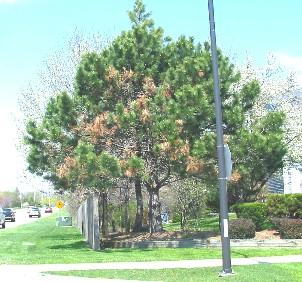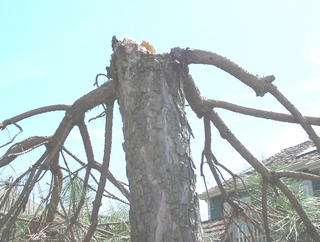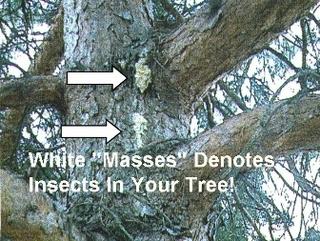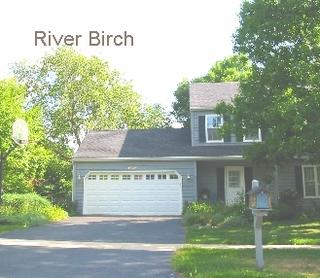

On the left, this Pin Oak was treated with my Iron/Manganese injection on August 4, 2005.
This life saving treatment was conducted under severe drought conditions because this tree needed green leaves (and more leaves) to acquire energy from the sun to overwinter.
The photo at the top right was taken on September 8, 2005 (34 days after the iron injection) and note the grass under the tree has even got much more browner that the August 4 photo. This tree was not watered during this time and you can plainly see the dramatic production of new green leaves needed for its winter survival. This is a wonderful example of what I can do with a dying Pin Oak tree in the middle of a dust bowl drought situation.
It takes many years of experience and knowledge to save trees under these conditions.







